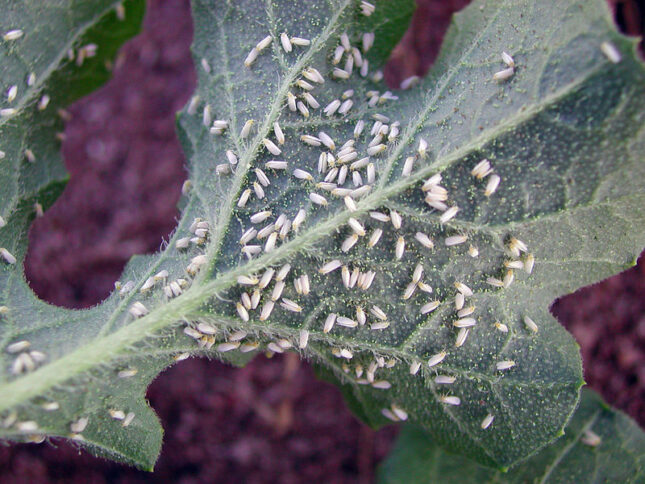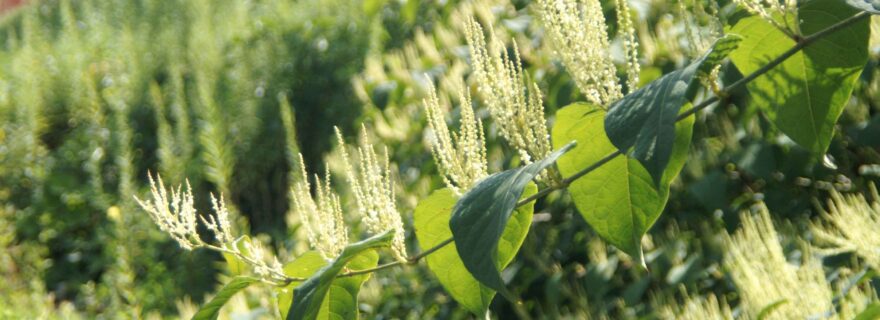Fighting fire with fire
During the course Popular Science Writing, students are asked to write an article based on a scientific talk, a practice that is close to our hearts. This week, an article about the pest control of the Asian knotweed by Anne-Fleur Oskamp.
What do camels and Australia have in common? Originally nothing much, but more camels are living in Australia nowadays than koalas. They were brought to Australia mid-19th century as a useful way of transport in the deserts there. Over time, the transition to the use of trains and the construction of roads made the camels superfluous. These animals are now causing big trouble - they are known to destroy buildings during their search for water.
Exotic species can cause problems in more places in the world, whether they have been introduced on purpose or by accident. In the Netherlands, another unfamiliar inhabitant is trying to make its way into the habitat: The Japanese or Asian knotweed (Reynoutria japonica). This plant may seem less of a nuisance than camels, but they are actually capable of doing some damage to buildings too. It can grow with a lot of strength, causing damage to roads, plumbing, and foundations along the way.

Special treatment
The problem with camels in Australia has partially been tackled by hunting, but removing the Asian knotweed turns out to be a much more stubborn issue. This can be ascribed to the small pieces of root that stay behind after extermination attempts, which are able to grow into another freshly grown plant without effort, even after electrocution. So if the Asian knotweed is causing all kinds of trouble here, aren’t they bothered by it in Asia? Nope. At places where it occurs naturally, its place in the ecosystem is balanced out neatly.
This balance is maintained by the presence of natural predators, among others. Think about the Japanese knotweed psyllid (Aphalara itadori), a type of plant louse which feeds on the knotweed. Scientists believe that these insects can be used for keeping the problem at bay in the Netherlands as well. The Japanese knotweed had escaped its natural predators by coming here, and by introducing its predators here as well the balance might just be restored.
Gut feeling
The use of natural predators is not a new phenomenon: “Natural predators are well received in agri- and horticulture because it is a clean and safe alternative to pesticides”, says Suzanne Lommen, who researches Japanese knotweed psyllids. An example of this is the use of Ichneumon wasps in greenhouses to combat Whiteflies. But the use of an exotic natural enemy to biologically control a plant pest in open nature is a first in the Netherlands.
But wasn’t the introduction of exotic species a dangerous practice, making this similar to fighting fire with fire? The psyllids do not originally occur here and could therefore be harmful to the local ecosystem. However, according to Suzanne, this fear is unnecessary: “Pest control of plants by the use of exotic species is a sensitive subject. People assume that the risk is large, which is not based on facts. This assumption mainly rests on a gut feeling promoted by the ecological disasters that arose after careless introductions.”

Think first, before you act
The keyword here is careless. Ecosystems are vulnerable, and it is important to think thoroughly before releasing some exotic species. The camels that were haphazardly released because they got out of fashion are an example of carelessness, but by doing focused research on the introduction of the Japanese Psyllid any unforeseen consequences for the Dutch ecosystem can be determined. This is not done outside, but by testing if the insect causes harm to any local plants. Luckily this does not seem to be the case and the Asian psyllid feeds exclusively from the Japanese knotweed.
The next hurdle to take is to discover if this insect is even capable of surviving in the Dutch ecosystem. That is why in 2020 a field study was started, in which the psyllid was released into nature - be it in mesh pockets. A year of research is not much and the official report has not been published yet, but Suzanne Lommen is hesitant to say that settlement and reproduction of the psyllid have potential, as well as the possibility of damage to the knotweed. The Japanese knotweed psyllid seems to be able to do its job on Dutch soil.
After all, not all exotic species are one and the same. While camels and knotweeds cause damage to buildings and ecosystems, we have nothing to fear from the Asian knotweed psyllid. And as a natural predator, this little insect might just be a healthy new neighbor that will help us control the Asian knotweed.
Bron
Lommen, S. (2022, 14 januari). Guestlecture Symposium Popular Science Writing 2022, University of Leiden.






0 Comments
Add a comment